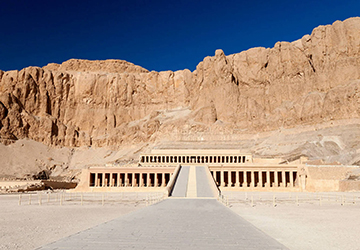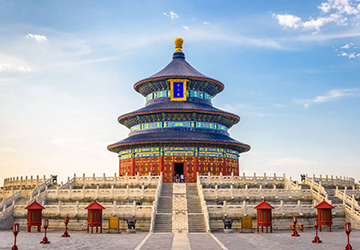A well-rounded wardrobe is essential for looking and feeling good in any situation. Certain pieces are indispensable whether you're dressing for work, a casual outing, or a special occasion. A thoughtfully curated wardrobe simplifies choosing an outfit and ensures you always look polished and put together.

Investing in these critical staples can save you time and stress while enhancing your style. Here are the top 10 must-have wardrobe staples for everyone, designed to provide versatility, functionality, and timeless appeal to your everyday attire.
1. Angkor Wat, Cambodia
Angkor Wat, located in Siem Reap, Cambodia, is the largest religious monument in the world. Originally constructed as a Hindu temple dedicated to Vishnu in the early 12th century, it gradually transformed into a Buddhist temple. The temple complex is renowned for its stunning architecture, intricate carvings, and vast size.
The central tower, 65 meters high, represents Mount Meru, the home of the gods in Hindu mythology. Angkor Wat's bas-reliefs depict various scenes from Hindu epics, such as the Ramayana and Mahabharata.
2.Borobudur, Indonesia
Borobudur, located in Central Java, Indonesia, is the world's largest Buddhist temple. Built in the 9th century during the Sailendra Dynasty, it features nine stacked platforms topped by a central dome. The temple is decorated with 2,672 relief panels and 504 Buddha statues. Its design symbolizes the path to enlightenment, with the central dome representing Nirvana.
Visitors often walk around the temple's three levels, symbolizing the three realms of Buddhist cosmology: Kamadhatu (the world of desires), Rupadhatu (the world of forms), and Arupadhatu (the formless world).
3.Karnak Temple, Egypt
The Karnak Temple complex, located in Luxor, Egypt, is one of ancient Egypt's largest and most significant religious sites. It was developed over approximately 2,000 years, with contributions from various pharaohs. The complex primarily honours the god Amun, but it also includes temples dedicated to Mut and Montu.
With its 134 massive columns, the Great Hypostyle Hall is one of Karnak's most iconic features. The temple's walls are adorned with intricate hieroglyphs and reliefs depicting various deities and pharaohs.
4. Parthenon, Greece
The Parthenon, perched atop the Acropolis in Athens, Greece, symbolizes ancient civilization. Constructed in the 5th century BCE, it was dedicated to Athena, the goddess of wisdom and war. The Parthenon's Doric architecture, characterized by its columns and friezes, exemplifies the classical Greek style.
Inside, it housed a massive gold and ivory statue of Athena. The temple's frieze and metopes depict mythological scenes, including battles between gods and giants.
5. Temple of Heaven, China
The Temple of Heaven in Beijing, China, is an imperial complex of religious buildings constructed in the early 15th century. Emperors of the Ming and Qing dynasties visited this site to pray for good harvests. The temple's main structures include the Hall of Prayer for Good Harvests, the Imperial Vault of Heaven, and the Circular Mound Altar.

The complex's layout and design are based on symbolic cosmology, with the circular shapes representing heaven and the square shapes representing earth.
6. Horyu-ji, Japan
Horyu-ji, located in Nara, Japan, is one of the country's oldest temples and a UNESCO World Heritage site. Founded in 607 by Prince Shotoku, it is a crucial site for understanding early Japanese Buddhism. The temple complex includes the world's oldest wooden structures, such as the five-story pagoda and the main hall (Kondo). Horyu-ji houses numerous cultural treasures, including statues, paintings, and religious artefacts, reflecting the spread of Buddhism in Japan.
7. Abu Simbel, Egypt
Abu Simbel, situated on the western bank of Lake Nasser in southern Egypt, consists of two massive rock temples built by Pharaoh Ramses II in the 13th century BCE. The enormous temple is dedicated to Ramses II and features four colossal pharaoh statues at its entrance. The smaller temple is dedicated to his wife, Queen Nefertari, and the goddess Hathor.
The temples were relocated in the 1960s to save them from the rising waters of the Aswan High Dam. The interior walls are adorned with scenes of the pharaoh's victories and offerings to the gods.
8.Prambanan, Indonesia
Prambanan, situated in Central Java, Indonesia, is an impressive Hindu temple complex dedicated to the Trimurti: Brahma, Vishnu, and Shiva. Built-in the 9th century, it features several towering spires, with the central Shiva temple at 47 meters. The temple complex is famous for its detailed carvings that illustrate scenes from the Ramayana and other Hindu stories. Prambanan's architectural style and craftsmanship reflect Indonesia's peak of Hindu culture.
9. Wat Phra Kaew, Thailand
Wat Phra Kaew, also known as the Temple of the Emerald Buddha, is located within the Grand Palace complex in Bangkok, Thailand. It is considered the most sacred Buddhist temple in Thailand. The temple houses the Emerald Buddha, a revered statue carved from a single piece of jade. The temple's architecture features intricate murals, golden stupas, and detailed ornamentation. Wat Phra Kaew is a crucial site for royal ceremonies and religious observances in Thailand.
10. Meenakshi Amman Temple, India
The Meenakshi Amman Temple in Madurai, Tamil Nadu, India, is a historic Hindu temple dedicated to the goddess Meenakshi (Parvati) and her consort, Sundareswarar (Shiva).
The temple complex covers 14 acres and includes 14 towering gopurams (gateway towers) adorned with thousands of colourful sculptures depicting gods, goddesses, and mythical creatures. The temple's halls, such as the Hall of Thousand Pillars, showcase exquisite stone carvings and vibrant artwork.
Conclusion
Exploring ancient temples offers a unique journey of history, culture, and spirituality. Each temple reflects its civilization's beliefs, artistic achievements, and architectural advancements. Whether it's the grand scale of Angkor Wat, the intricate carvings of Prambanan, or the sacred atmosphere of Wat Phra Kaew, these sites provide a profound connection to the past.
They serve as cultural landmarks that inspire awe and reverence in visitors worldwide. So, pack your bags, set out on an adventure, and immerse yourself in the timeless splendour of these magnificent temples.
